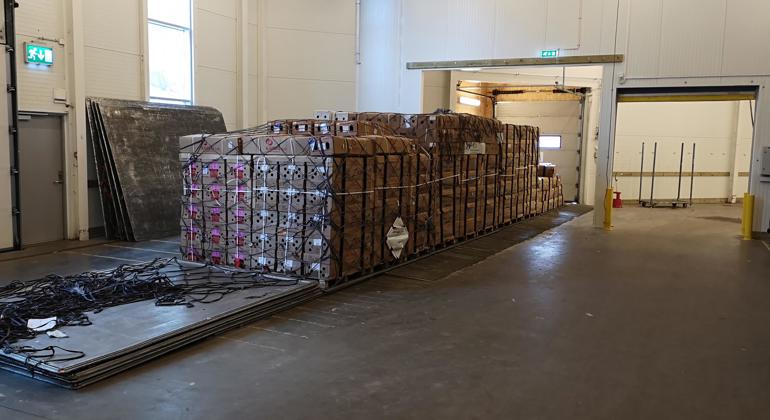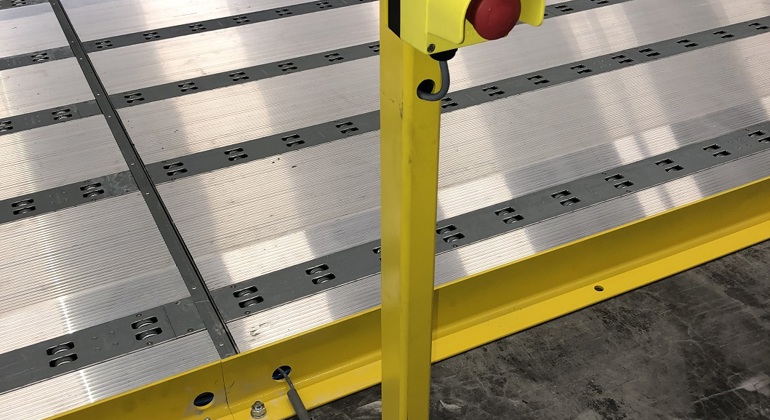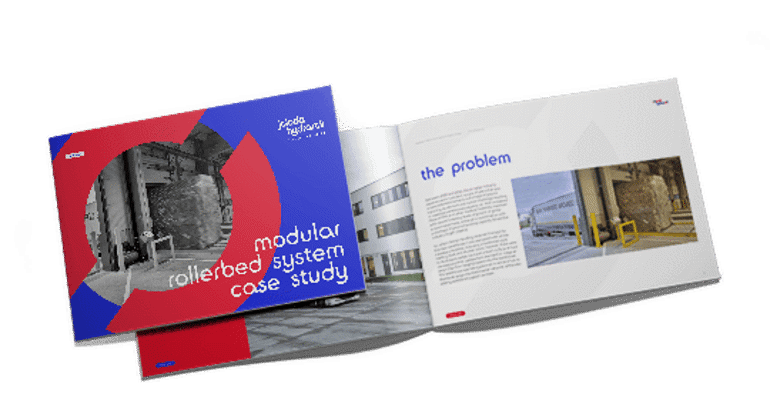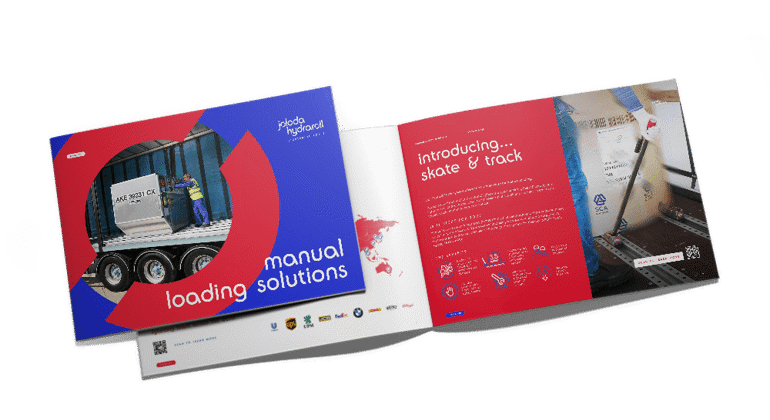When organising storage for your warehouse and considering the three major options of racking, mezzanine floors and pallet shuttle systems, there are several things to contemplate for each. Below is a look at each option and some of the things to take into account to help you make the right decision.
Racking
Choosing the right racking is imperative. Depending on your warehouse, you’ll prefer certain types of racking over others. Your racking should:
- make full use of space;
- save you money;
- increase productivity;
- and support the features of your inventory.
Of course, how do you know which system is right for you? Here’s how to choose the right racking system:
Seek the help of an expert
An expert racking provider will help you determine the best type of racking for your warehouse. They’ll have extensive knowledge of the industry and of which systems work best in which circumstances. They can visit your warehouse and get to know the outfit and goals.
As part of gathering information to determine the right system for your warehouse they’ll conduct operations such as the following:
- Measure your space. The racking designer will consider the height and floor space availability. They’ll look at how the warehouse is using the space and at ways to improve it. Understanding how much space they have to work with makes it possible for them to reflect upon more options.
- Note down details about the business and its operations. To provide the most appropriate racking for the warehouse, the company must learn everything there is to know about how the business operates. Whether you’re operating a speedy, e-commerce warehouse or a more steady but delicate operation, the racking provider will want to know so they can equip you with the most suitable racking for the warehouse.
- Establish short- and long-term goals. A provider that is tailoring their racking to your business needs will wish to know your goals. Then they can customise the racking to your current needs, of course, but also future-proof them. Perhaps you’re expecting a surge in demand, due to seasonal changes or because you’re planning to expand your services. Maybe you don’t even know whether you’re going to increase your storage capacity, but your racking provider will want to know.
- Collect information about the characteristics of your inventory. What’s the turnover? Are the goods perishable? Are there any temperature control requirements? The racking provider will ask these and other questions about your inventory to determine the right racking for your warehouse.
- Consider the pallet numbers. How many pallets are you storing at one time? The racking provider will collect information on this so that they can tailor the racking to match your capacity.
- Note the floor load capacity. Pallet racking is heavy, so it’s essential your warehouse floor can withstand the weight. The experts will assess your floor to ensure it won’t weaken under the weight of the racking.
- Check fire exits and locations. Health and safety is paramount. Your racking expert will be sure to contemplate fire safety exits and locations so that if there’s an emergency, warehouse workers can leave the building safely and quickly.
- Ask for specific details about forklift trucks. Do you intend to keep using the same forklift trucks, or are you going to buy some new ones? Pallet racking can vary in terms of how compatible it is with certain types of forklift truck. The racking should match the capabilities of your handling equipment, so your expert will want details about these vehicles.
- Analyse existing features. When you spot any restraints or limitations early, you can address them and work around them. An expert will look at structure supporting columns, heating systems, lighting and any other structural features or fittings that could pose a problem and make a note of their location to ensure the racking doesn’t interfere with them.
- Evaluate directional flow, departmental space and locations. To achieve the best layout, the expert will look at the goods in and goods out areas, and tailor the racking to position various departments accordingly, streamlining the process sequentially and saving time and confusion.
Mezzanine floors
A mezzanine floor, as we mentioned above, is a second, third or fourth floor above the main warehouse floor. If you have the budget and the space for one, it’s a highly effective, space-saving solution. Mezzanine floors offer several advantages:
- They remove the need to relocate. You might think you’re getting the most out of your warehouse space already, but a mezzanine floor can squeeze even more out of it and eliminate the need to relocate. They can increase the size of your working area and productivity levels without inflicting all the headaches relocation causes.
- They can increase your return on investment. By adding a second floor or more to your warehouse, you give yourself the option of expanding your product lines, bumping up productivity or freeing up space to run operations more efficiently.
- They offer structural flexibility. Mezzanine flooring is adaptable and extendable, so the warehouse can alter it as the business grows. The flooring allows you to future-proof the warehouse and expand it easily if and when it’s necessary.
Of course, when deciding whether to install mezzanine flooring, there are several things to consider:
Health and safety
Safety first is always the case with mezzanine flooring. No warehouse worker must ever work in unsafe conditions at any time. Handrails and steps will be essential, and your mezzanine flooring provider will include these in the design and construction of the floor.
Other health and safety features to think about include fire alarms and fire-protective ceilings. When deciding whether to go ahead with installing mezzanine flooring, check for any industry requirements to which you’ll also have to adhere.
Purpose
Now you’ve established your health and safety requirements, and how you’re going to address them, you must think about how you’ll be using your mezzanine floor and about the requirements this purpose will create. Mezzanine floors are bespoke, so once you understand your purpose and the corresponding requirements, as well as the benefits the floor will bring to your warehouse, the mezzanine floor providers will be able to work around you.
If, for instance, you’re going to be placing machinery on the mezzanine floor or storing a lot of materials, you’ll have to think about the weight and whether the floor will be strong enough. The provider will bear this in mind, but you should think about it, too.
Size
A warehouse’s size and footprint correlates directly to what mezzanine floor the operators can install. They increase space dramatically and can create as much space as to double up your floor plan; however, before you go ahead with the installation, you must take into consideration the height of the warehouse, making sure there’s enough headroom for staff and for any storage facilities you’ll use on the floor.
Lighting, materials and design
This is where you get to have more of a say in how you want your mezzanine floor to be. Before construction, you can decide, to an extent, how the floor should look and function. Do you want a suspended ceiling on the underside? What colour would you like everything to be? What type of flooring would you like on the top? What style of balustrade would you like? You can also make decisions regarding any enclosed staircases or specifically designed office spaces on the floor.
Pallet shuttle system
A warehouse shuttle system is a high-density, compact solution that relies on remote-controlled satellites to lift, move and place pallets in a rack. These systems are flexible insofar as they can accommodate first in first out (FIFO) and last-in-first-out (LIFO) systems. Since forklift trucks don’t have to enter the unit, pallet shuttle systems are a lot safer and cleaner, and they generate less damage than other high-density storage systems. Pallet shuttles are an excellent option when it comes to high turnover products with massive input and output.
What to consider when deciding whether to choose a pallet shuttle system
Just like any other system, whether to install a pallet shuttle system will depend on the needs of the warehouse. You could find yourself choosing between a pallet shuttle system and a dynamic racking one. Below are a few factors to think about.
Application
Are you going to implement a FIFO system or a LIFO one? A dynamic tracking system is likely to be more a LIFO, as are most dynamic racking systems, but this creates accessibility problems. The space-saving will limit access to your stored pallets.
Pushback, drive-through and drive-in systems tend to be LIFO, and this works for many systems that call for deep lane storage. They suit higher picking volumes on a small pool of SKUs. Depending on your layout or picking strategy, drive-through systems can be LIFO. The flexibility of pallet shuttle systems makes them compatible with FIFO and LIFO systems. Pallet shuttles are the more common system to use when loading and unloading from a single lane in LIFO operations.
In essence, pallet shuttle systems are FIFO. All the forklift trucks need to do is access the pallet offered up by the system. The shuttles should be used to load and unload the entire level, and you’ll need two aisles: one for loading and one for access. Although FIFO systems have more dynamic elements, such as flow rails and shuttles, they’re safer because the forklift truck doesn’t have to enter the rack structure.
Pallet depths
Pallet depth is a crucial metric because the purpose of these systems is to pack more pallets into less space. As a general rule of thumb, more pallets means less access. Pallet flow and shuttle racks are more space-efficient because you can pack more pallets into less space than in drive-in systems or pushback ones.
Pallet shuttles will allow you to go more deeply. They don’t rely on gravity or on forklift trucks entering a deep lane. Since they control pallet placement more accurately, they also maximise the front-to-back storage capacity.
Ease of SKU selection
How easy is it to select pallets? The more your storage density increases, the harder it becomes to select pallets. Whereas selective racks will allow you to pick any pallet at any point, dynamic systems suffer more limitations. Drive-in systems are limited to a single SKU per bay, but pushback, flow and pallet shuttle systems create scope to store a different SKU in every lane.
Shuttles can move in any direction and access pallets from any position, which means you can store pallets in deep lanes similar to flow systems or drive-in. You’ll be able to slot one SKU per lane.
Forklift interactions
Do forklift trucks enter the structure or engage any other way with the rack? In many designs, these trucks only pick and place at the front of the rack. The potential for collisions and component damage triggers safety concerns when the forklift truck has to enter the structure. Since forklift trucks enter the rack constantly in drive-in and drive-through systems, the structures of these systems feature heavier components, and it’s important to manage the frequency of interactions.
Pallet shuttle systems don’t have any issues with forklift trucks engaging with the rack at all, and, in general, warehouses will stock and pick them from one side of the structure. This is also the case with pallet flow systems, although they’re slightly different in so far as that stocking takes place from the rear of the structure and operators pick at the front of it. Pushback racking is also manageable from the front, and there’s no need for the forklift truck to engage with the racking because it’s possible to pick and load from the same aisle.
Drive-in systems, however, will require a forklift truck to enter the rack. They must pick or place pallets deep within the structure. Drive-through systems also call for a forklift truck to enter the rack. The driver may enter either side to place or pull the pallets.
Load interactions
How does the forklift truck touch the load or impact it?
In pallet racking systems, generally, the interactions between the forklift truck or the rack and the load are minimal. The loads sit on pallets, and the forklift truck will handle them and deposit them on beams of the rack, the rails or the guides. In the case of some containers, there could be direct interaction with the product.
Pallet shuttles often sit beneath the pallet and transport it without interacting with the load itself. This also tends to be the case with pushback racking (because it uses mechanical carts) and drive-in racking, which calls upon heavy steel rails as the pallets are picked and placed.
Cost
How expensive are the different high-density storage systems?
From a cost-per-position perspective, drive-in racking is the least expensive option because it doesn’t require shuttles, carts or rails, whereas pushback racks rely on carts and these drive up the cost per position. Shuttles will cost about the same per position as pushback racks. The shuttles, power and maintenance will all increase the cost.











